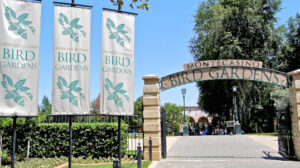Johannesburg North Attractions Fundamentals Explained
Johannesburg North Attractions Fundamentals Explained
Blog Article
Johannesburg North Attractions Can Be Fun For Anyone
Table of ContentsOur Johannesburg North Attractions PDFsJohannesburg North Attractions Things To Know Before You BuyJohannesburg North Attractions for BeginnersJohannesburg North Attractions for BeginnersHow Johannesburg North Attractions can Save You Time, Stress, and Money.Indicators on Johannesburg North Attractions You Should KnowSome Known Details About Johannesburg North Attractions
You should keep security in mind and vacationers must remain alert at all times when in unknown environments. Talk with the citizens when you remain in town to discover out about the area you are staying in. Johannesburg North attractions. When on the road (this does not put on shopping center and various other safe and secure settings) ideal basic guidance is to try your finest to resemble a local and to avoid showing any kind of kind of wealth
The Basic Principles Of Johannesburg North Attractions
Professor Revil Mason O. J. (Thomson, 1946) checked out the Witwatersrand's pre-colonial background. His archaeological work blew up the 'em pty land' misconception, according to which the region was devoid of human habitation prior to the arrival of European inhabitants. In his magazines Prehistory of the Transvaal: A Document of Human Task (1962) and Origins of Black Individuals of Johannesburg and the Southern Western Central Transvaal AD 3501880 (1986 ), Professor Mason showed the level of social and financial development in the area before Europeans established foot below.

What Does Johannesburg North Attractions Do?
In 1878, David Wardrop found gold in quartz veins at Zwartkop, north of Krugersdorp. In 1881, Stephanus Minnaar came throughout gold on the farm Kromdraai, near the Cradle of Humankind.
In March 1886, a protrusion (soon to be called the Main Reef) was located, quite fortunately, on Gerhardus Oosthuizen's farm Langlaagte. Some say that the Lancastrian coal miner George Pedestrian found this coral reef. An additional travelling English prospector, George Harrison (that had actually formerly operated in Australian mines) acquired a prospecting permit in regard of Langlaagte in Might 1886.
He decided to go on in a pursuit for greener fields, and disposed of his Langlaagte insurance claim for the baronial amount of 10. Alas: under lay the richest goldfield ever found. The exploration of this abundant auriferous reef provoked a gold rush that indicated the end of bucolic serenity in the southerly Transvaal.
It would certainly, within six years, become the biggest community in southerly Africa. Within a decade, it would make the Z. A. R. up until after that an anarchical and insolvent little state the most affluent nation in Africa. By the millenium, the Z. A. R. was to go beyond Russia, Australia and the USA of America to come to be the globe's index leading gold manufacturer, creating greater than a quarter of the world's gold.
The 5-Minute Rule for Johannesburg North Attractions
It was understood as Ferreira's Camp, named after Colonel Ignatius Ferreira. He was a Boer traveler upon whom the British authorities had actually presented the condition of Companion of one of the most Differentiated Order of St Michael and St George (qualifying him to the post-nominal letters C. M. G.) in gratefulness for his function in the war that had actually deposed the Pedi king Sekhukhune in 1879.
Quickly the camp was bristling with camping tents and wagons as newcomers arrived daily from everywhere. By September 1886, some 400 people stayed in Ferreira's Camp, which soon boasted upreared iron and hardwood buildings. 2 other camps were established: Meyer's Camp on the ranch Doornfontein, and Paarl Camp. The latter was nicknamed Afrikander Camp; many people from the Cape Colony cleared up there.

See This Report on Johannesburg North Attractions
This name got currency by word of mouth, such that the State Assistant attested the name to the Mining Commissioner on 9 October 1886. Stands in the village were auctioned on 8 December 1886. While some stands were cost 10, click here to find out more others were torn down for as low as sixpence.
2 years later on, these erven were to change hands for as high as 750 each. The tented camps dwindled as a dorp of corrugated iron structures developed and expanded north of the mines located along the Main Reef Roadway. Locations such as Jeppe's Town (where working-class immigrants erected their dwellings) and Doornfontein (where the wealthy brand-new 'Randlords' started to build their opulent homes) were quickly contributed to the ever-expanding map of the community.
Getting The Johannesburg North Attractions To Work
Apart from the road names, there were no indications of Johannesburg being positioned in a Dutch-speaking country., virtually everyone talked English and even the Federal government servants resolved one in English, unless they were very first attended to in the Taal (or Low Dutch)'.
As such, Britain had a passion in making sure optimal conditions for gold manufacturing on the Witwatersrand, which the gold was exported to London instead than Berlin a critical provided all the extra clamant by the Z. A. R - Johannesburg North attractions.'s increasing toenadering with Germany. Mine owners were on an accident course with President Kruger, whose policy of monopolistic giving ins (frequently provided to his cronies) protected against mining firms from acquiring materials of materials (especially dynamite) and work on their very own, cheaper terms
The 15-Second Trick For Johannesburg North Attractions
In 1890, the Volksraad had limited the franchise to white guys who had stayed in the Z. A. R. for fourteen years or longer, hence disqualifying most of the immigrants (who occurred to be the significant contributors to the fiscus). Anxiety for the ballot was a simple pretense for promoting a different agenda; the majority of uitlanders regarded themselves as short-lived visitors and had no purpose of staying in the Z.
Report this page